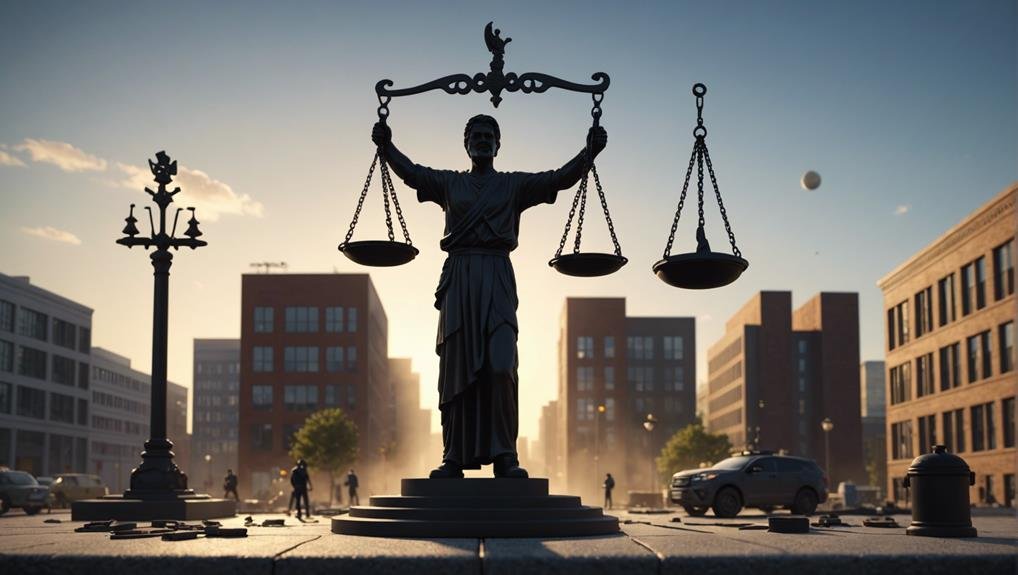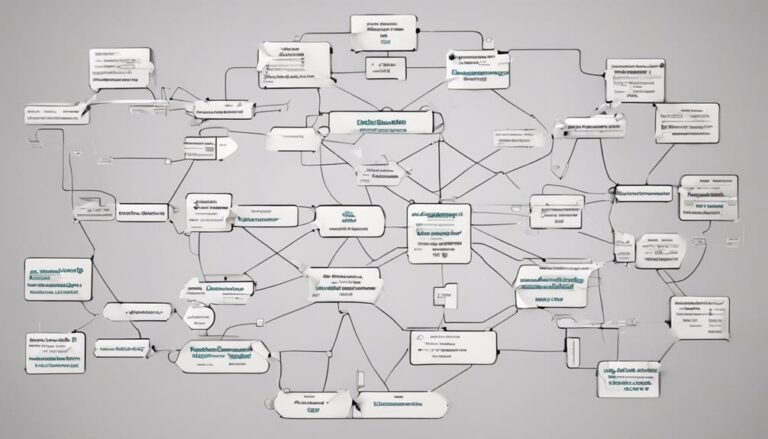Department of Labor (DOL): Laws, Departments, History
The U.S. Department of Labor (DOL), established in 1913, enforces federal labor standards and advocates for American workers. It aims to guarantee employment opportunities, improve working conditions, and safeguard retirement and healthcare benefits. With over 180 federal labor laws, the DOL verifies compliance, monitors employers to prevent exploitation, and upholds laws on overtime pay and workplace safety. Key agencies like OSHA and EBSA play pivotal roles in enforcing safety regulations and managing retirement and healthcare plan compliance. Historical milestones, proposed mergers, and the Biden administration's focus on worker empowerment further highlight the DOL's significance in protecting worker rights and promoting fair labor practices.
Key Takeaways
- DOL enforces 180+ federal labor laws for worker protection.
- Key agencies include OSHA for workplace safety and EBSA for retirement compliance.
- Historical milestones like the Adamson Act and Frances Perkins' legacy highlight worker advocacy.
- Proposed merger discussions aim for organizational efficiencies but raise worker protection concerns.
- Biden administration prioritizes worker empowerment, income equality, and global labor initiatives.
Establishment and Mission
The establishment of the U.S. Department of Labor (DOL) in 1913 marked a pivotal moment dedicated to enforcing federal labor standards and advocating for the well-being of American workers. Initially founded to improve working conditions and enhance employment opportunities, the DOL has evolved to oversee a wide range of labor-related laws and regulations.
Currently, the department under the leadership of Secretary Martin J. Walsh focuses on promoting job opportunities, protecting retirement and healthcare benefits, facilitating employer-employee relationships through collective bargaining, and monitoring labor market changes. These initiatives aim to guarantee fair treatment of workers, promote safe and healthy working environments, and uphold the overall welfare of the labor force.
The DOL's historical background underscores its commitment to safeguarding workers' rights and fostering a robust labor market.
Enforcement of Labor Laws
Marked by its historical commitment to safeguarding workers' rights, the U.S. Department of Labor (DOL) rigorously enforces over 180 federal labor laws pertaining to workers' compensation, unions, and workplace safety.
The DOL guarantees compliance with labor standards, protecting workers' rights to fair wages, safe working conditions, and the freedom to organize. It monitors employers to prevent exploitation and discrimination, upholding laws that govern overtime pay, minimum wage, and occupational safety.
Key Departmental Agencies
Demonstrating a pivotal role in overseeing and enforcing labor regulations, the Department of Labor (DOL) comprises several key agencies essential for maintaining workplace standards and worker protections. Two vital agencies within the DOL are the Occupational Safety and Health Administration (OSHA) and the Employee Benefits Security Administration (EBSA). OSHA is responsible for enforcing safety and health regulations in the workplace, reducing hazards, setting safety standards, and ensuring reporting procedures are followed. On the other hand, EBSA administers and enforces compliance with retirement and healthcare plan regulations, focusing on educating workers, retirees, and plan sponsors on their rights and responsibilities. These agencies play a significant role in upholding OSHA regulations and EBSA compliance, safeguarding the well-being of workers across various industries.
| Agency | Focus | Responsibilities |
|---|---|---|
| Occupational Safety and Health Administration (OSHA) | Safety and Health Regulations Enforcement | Reducing workplace hazards, setting safety standards, and enforcing reporting procedures. |
| Employee Benefits Security Administration (EBSA) | Retirement and Healthcare Plan Compliance | Administering and enforcing retirement and healthcare plan regulations, educating workers, retirees, sponsors. |
Historical Milestones
Throughout the evolution of the Department of Labor (DOL), significant historical milestones have shaped the landscape of labor standards and worker rights in the United States.
One notable milestone is the passing of the Adamson Act in 1916, which established the eight-hour workday for railroad workers.
Another pivotal moment was the appointment of Frances Perkins as the Secretary of Labor in 1933, making her the first female cabinet member in U.S. history.
These milestones reflect the Department's commitment to improving working conditions and advocating for the rights of American workers.
The legacies of Perkins and the eight-hour workday continue to influence labor policies and practices, emphasizing the importance of fair treatment and protection for workers across the nation.
Proposed Mergers and Policies
The proposed merger of the Department of Education and the Department of Labor, though not yet realized, has sparked discussions on potential organizational efficiencies and strategic alignments within the federal government. Such a merger could lead to increased merger efficiency and collaboration between departments overseeing education and labor, potentially streamlining processes and reducing redundancies.
However, concerns have been raised about the potential impact on worker protections, as both departments play vital roles in safeguarding labor rights, workplace safety, and educational opportunities. Balancing these considerations would be vital to guarantee that any merger benefits both the organizational structure and the protection of workers' rights within the federal government.
Biden Administration's Focus
How does the Biden Administration plan to prioritize worker rights and benefits within the Department of Labor's focus?
The Biden Administration's approach emphasizes worker empowerment and income equality. By shifting power dynamics from corporations to workers, the administration aims to reduce income disparities and enhance protections for employees forming unions.
Through the enforcement of key laws such as the Employee Retirement Income Security Act (ERISA), the Fair Labor Standards Act, and the principles advocated by the International Labor Organization promoting decent work globally, the Department of Labor under the Biden Administration seeks to guarantee fair treatment, just compensation, and improved working conditions for all workers.
These initiatives align with the administration's broader goal of fostering a more equitable and inclusive labor market.
Global Labor Initiatives
President Biden's focus on enhancing worker rights and benefits domestically aligns with the Department of Labor's role in promoting fair labor practices globally through its involvement in various global labor initiatives.
The Department of Labor, particularly through the Bureau of International Labor Affairs (ILAB), plays a significant role in enforcing international regulations and ensuring fair labor practices worldwide. ILAB works to uphold trade agreements, combat international child labor, forced labor, and human trafficking, and promote decent work standards as outlined by the International Labor Organization.
Conclusion
In summary, the Department of Labor's significant history, diverse agencies, and steadfast enforcement of labor laws highlight its vital role in safeguarding American workers.
Through a lens of vigilance and dedication, the DOL stands as a beacon of protection and advocacy in the intricate landscape of labor rights.
Its enduring commitment to promoting fair labor practices guarantees a foundation of stability and security for workers across the nation, symbolizing a fortress of justice in the world of employment.







